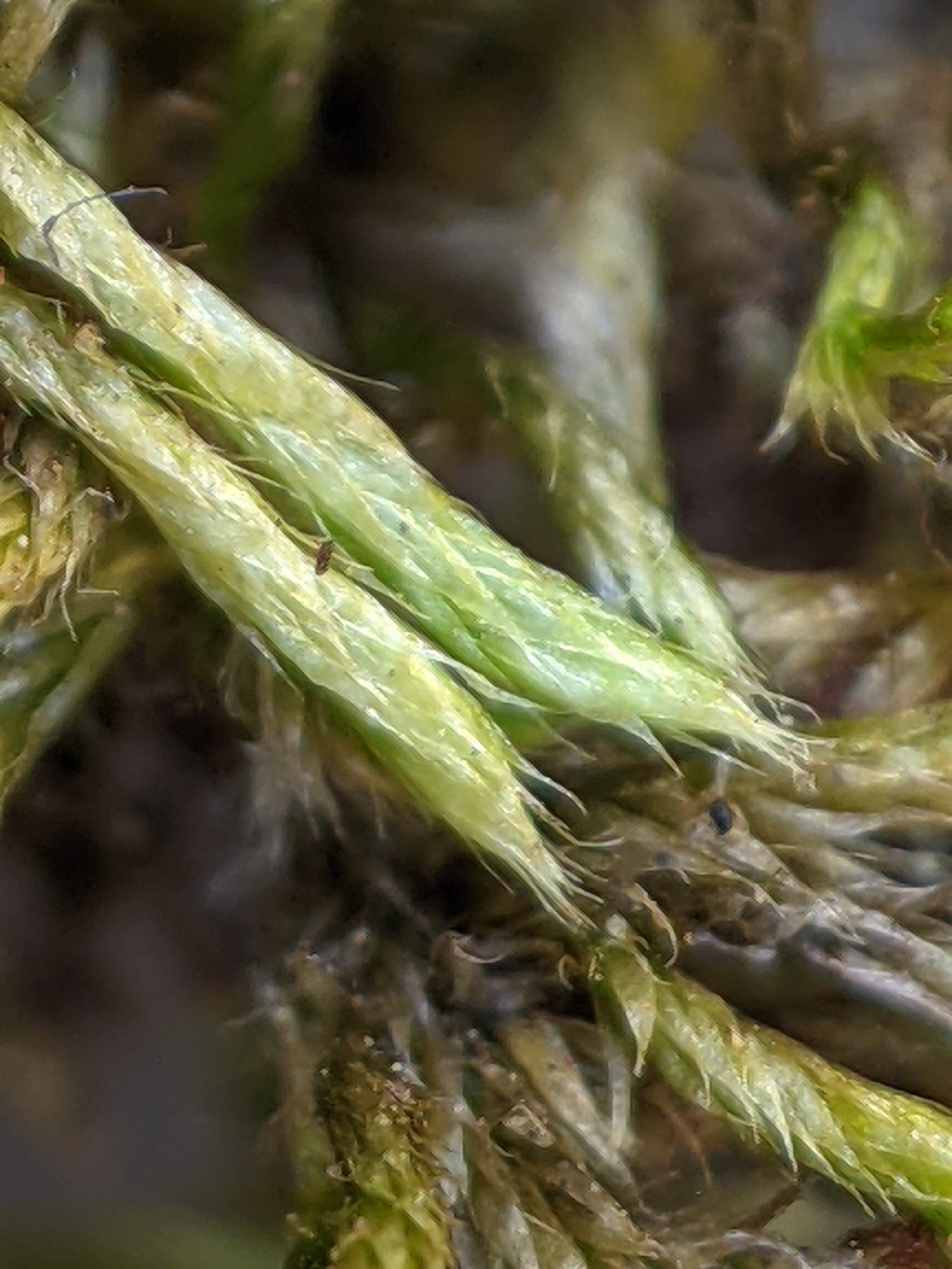Ischyrodon lepturus
(Taylor) SchelpeMats on rocks. Stems 5–25 mm long, simple or subpinnately or irregularly branched, with fascicles of rhizoids arising at leaf bases, dark brown, with an ill-defined central strand. Leaves ovate or ovate-lanceolate, narrowed at base, concave, often with a weak plication extending c. 1/3–1/2 leaf length, erect- to wide-spreading when moist, erect when dry, occasionally weakly complanate; apex acuminate; costa stout and well-defined at base, extending ½–3/4 leaf length; margins entire or less often weakly crenulate or with a few weak teeth, weakly reflexed at base on one or both sides, otherwise plane, without a distinct border; laminal cells linear to elongate-rhomboidal, 37–110 μm long, 3–10 μm wide; alar cells subquadrate, quadrate or oblate, 8–20 μm long, 10–18 μm wide, forming a large group extending from c. 7–10 cells along the base of the costa to (17–) 20–30 cells up margin; stem leaves (1.2–) 1.5–2 mm long, 0.45–0.8 mm wide; branch leaves 0.8–1.4 mm long, 0.4–0.5 mm wide. Sporophytes rare in Australian plants. Setae 6–7 mm long, brown, smooth. Capsules ellipsoid, erect, c. 1.5 mm long. Operculum shortly oblique-rostrate from conic base, c. 0.4 mm long.
VVP, GipP, WaP, CVU, GGr, DunT, EGL, HNF. Mostly in rocky outcrops and rises among grasslands, woodland and along gorges in the Grampians and Mount Arapiles, Hamilton to Portland, near Lake Corangamite and in low rainfall areas to the west and northwest of Melbourne, but also at the entrances of the Byaduk Caves near Hamilton and with occasional records elsewhere (e.g. near Omeo, near Seymour and Wilsons Promontory). Also WA, SA and Tas. New Zealand, Chile and South Africa.
 Spinning
Spinning


